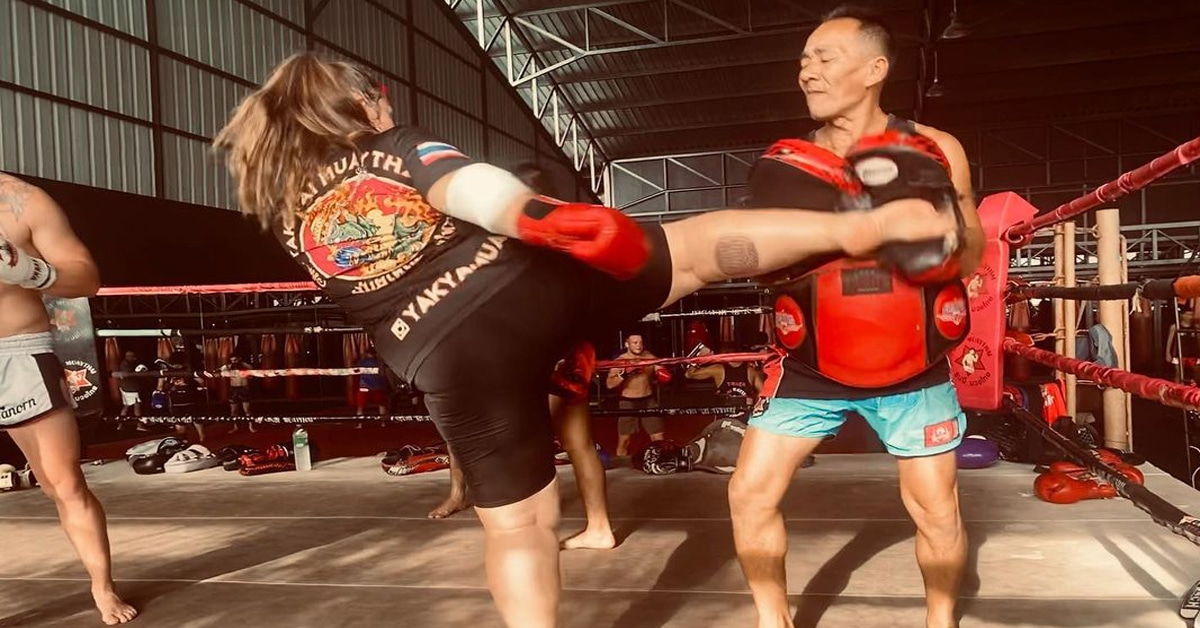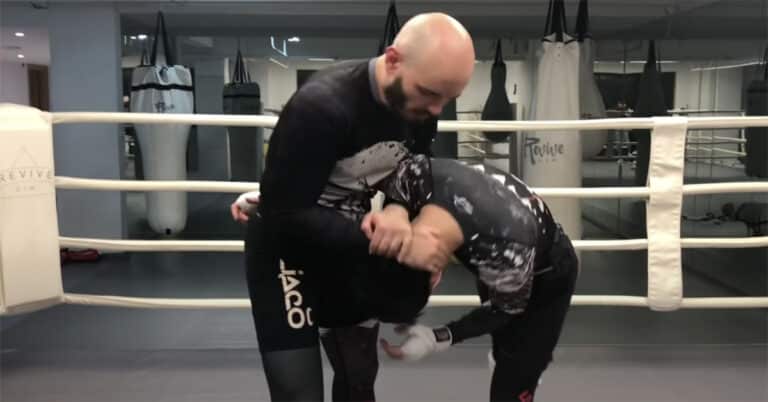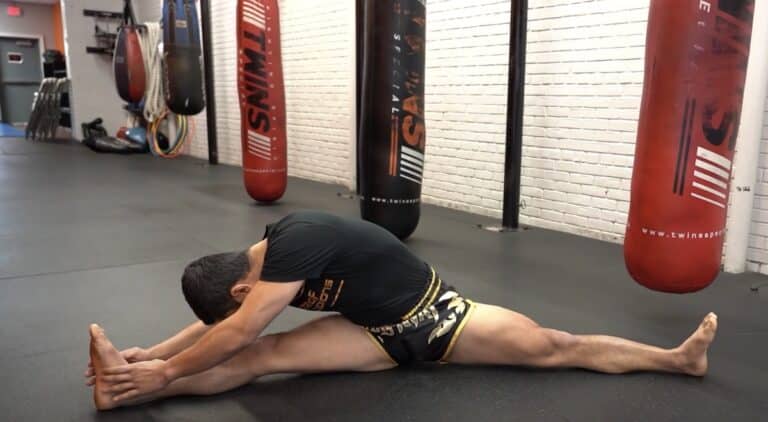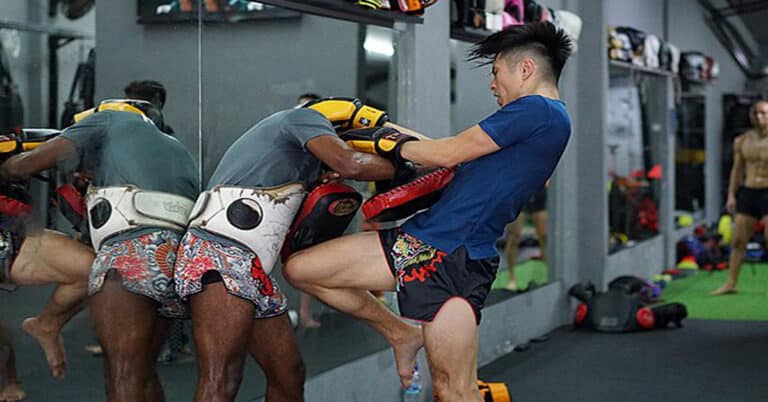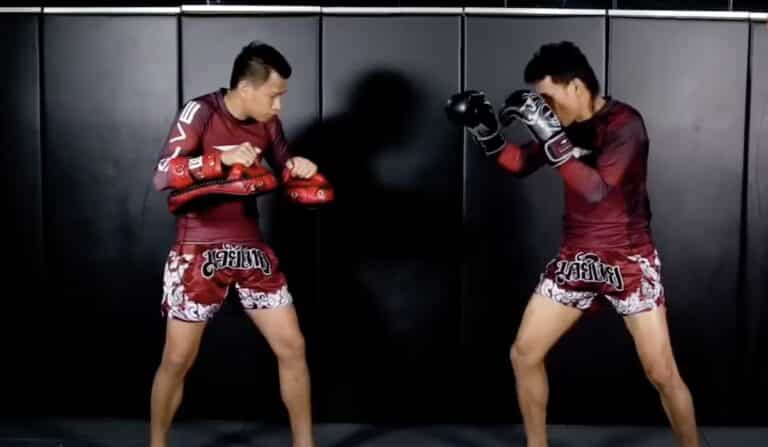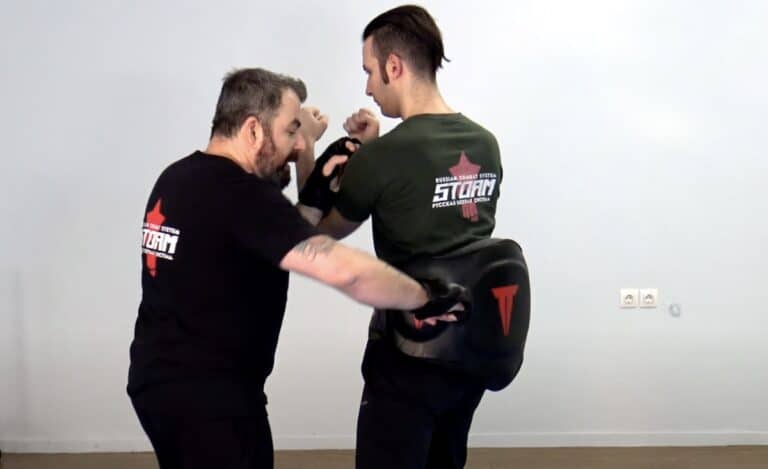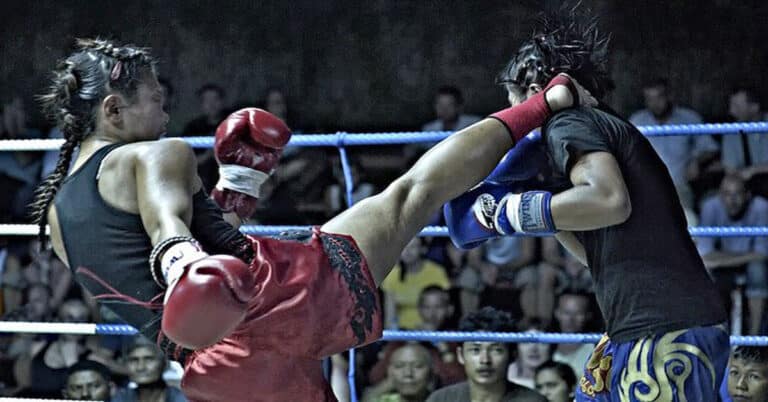Muay Thai Training – The Basics
If you’re looking to get in shape and learn a new martial art, Muay Thai training might just be the perfect fit for you. This ancient Thai combat sport, also known as ‘The Art of Eight Limbs,’ is not only a great workout but also an excellent form of self-defense.
Before you start, it’s important to gear up and find a good Muay Thai gym. Once you’ve found your training ground, you’ll begin with shadowboxing and bag work, and eventually work your way up to sparring in Muay Thai training.
In this guide, we’ll walk you through the basics of Muay Thai training, starting with the crucial stance and progressing to the various techniques, including punches, kicks, elbows, knees, and clinching. Get ready to sweat, push yourself, and discover the art of Muay Thai.
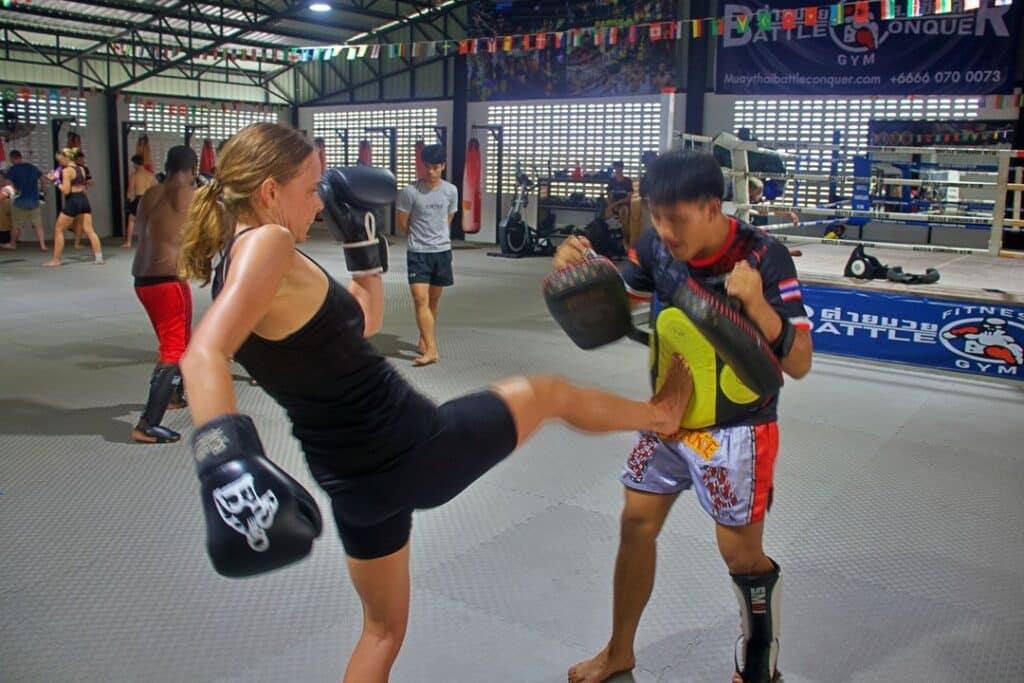
Muay Thai Training – Just getting started
Why Muay Thai training?
Muay Thai is not your average workout – it’s a martial art that packs a serious punch. Even if one is not planning to compete in a match, Muay Thai training has huge benefits as it is a whole-body intense aerobic and anaerobic workout. It is great for getting in shape, losing weight, relieving stress, and improving cardio in addition to learning self-defense and fighting techniques.
On the one hand, you’ll be doing plenty of aerobic exercises like running, jumping rope, and Muay Thai shadow boxing, which will get your heart pumping and your lungs working overtime. This type of activity helps increase your overall cardiovascular performance, which means better stamina and endurance for all areas of your life.
But it’s not all about cardio – Muay Thai also includes plenty of exercises such as punching, kicking, elbowing, and kneeing. These high-intensity moves will help you build strength and power in your upper and lower body, as well as improve your balance and coordination.
The beauty of Muay Thai is that it’s a full-body workout that engages every muscle group in your body, from your legs and glutes to your core and upper body. And because it’s so varied and challenging, you’ll never get bored – there’s always a new technique or combination to master.
Gear for Muay Thai Training
If you’re just starting out in the world of Muay Thai training, you might be wondering what gear you need to get started. Luckily, as a newbie, you won’t need to break the bank to get started. All you really need is a pair of Muay Thai gloves, hand wraps, and some shorts.
Of course, if you really want to look the part, investing in some Muay Thai shorts is always a plus. While shin guards are optional at first, you’ll definitely want to pick up a pair before you start Muay Thai sparring to protect your shins and feet from any errant kicks.
Sparring usually will not begin for several weeks. So start by learning the basic stances and forms of striking, plus getting in shape, before you get too worried about sparring. Once you begin sparring, though, you will need a cup for groin protection and a mouthguard.
Athletics in addition to Muay Thai Training
Muay Thai is a physically demanding sport that requires strength, endurance, and agility. And while you’ll certainly get a great workout from your Muay Thai training sessions, there’s no denying the benefits of supplementing your gym time with some additional athletics such as jogging.
One form of exercise that comes highly recommended by Muay Thai experts is good old-fashioned jogging. And we’re not talking about a leisurely stroll around the block here – we’re talking about a serious cardio workout. In fact, some of the most legendary Muay Thai fighters of all time, including Buakaw, Saenchai, and Rodtang, all swear by the benefits of daily jogging.
For example, in a video with Superbon, ONE Flyweight Muay Thai World Champion Rodtang broke down his running regimen. Rodtang hits the pavement six days a week, rain or shine. On three of those days, he pushes himself to the limit by running a jaw-dropping 15 kilometers (that’s almost 9.5 miles, for those keeping score). But even on his “easier” days, he’s still covering an impressive eight kilometers (or just under five miles).
Now, let’s do some quick math here. If he’s running 15 kilometers three times a week and eight kilometers three times a week, that means he’s covering a mind-boggling 69 kilometers (that’s nearly 43 miles) per week.
Why is jogging such an essential part of a Muay Thai fighter’s training routine? For starters, it’s a great way to build cardiovascular endurance, which is crucial for lasting through a grueling fight. It also helps to strengthen the muscles in your legs and core, which are both essential for generating power in your strikes.
Finding a Muay Thai training gym
Choosing the right gym is absolutely crucial when it comes to your Muay Thai journey. It’s not just a matter of finding a convenient location or a gym with fancy equipment – you need to find a place that will help you develop proper technique from the get-go, and that’s not always an easy task. Start with research, reading reviews, and some of the top coaches.
Most gyms will also allow a free drop-in session. While there, do the students seem engaged and motivated? Does the instructor take the time to correct the technique and provide individualized feedback? And most importantly, did you enjoy the class structure and feel challenged by the combinations?
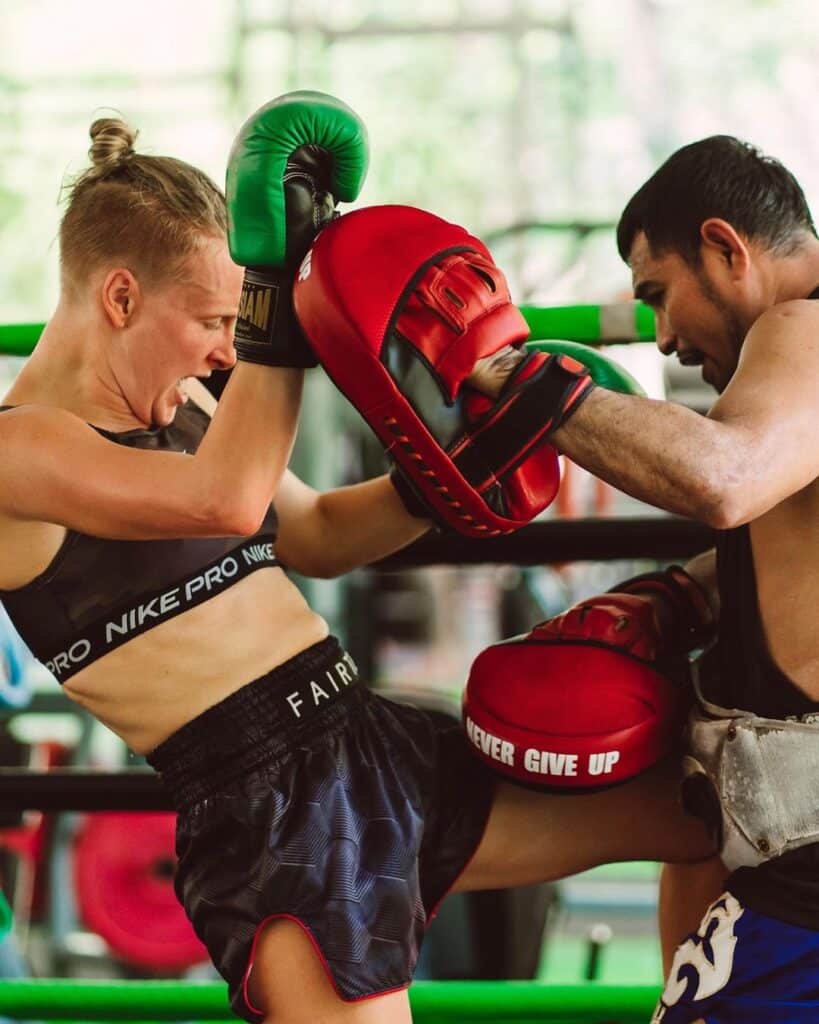
What to learn in Muay Thai training basics?
Stance and Hands
For becoming a good Muay Thai fighter, the first thing you need to learn is how to stand properly. It’s like building a strong foundation for a house – if it’s not solid, the whole thing can crumble. You will want your back foot facing away from you, and your lead foot facing towards your opponent. For exact stance science please consult with a coach to ensure it is the correct technique.
Keep your chin tucked, raise your fists to the side of your head for the guard, and keep your elbows next to your body but slightly out. Your forearms are elbows are to protect your ribs from kicks, while your hands protect your head from punches. Keep it relaxed so you can react quickly.
Punching
The jab is like the conductor’s baton in an orchestra. It is the most essential punch. It sets everything up. It’s quick and easy to throw, and it’s great for measuring distance and disrupting your opponent’s rhythm. You can use it to set up more powerful punches, like a cross, or to land a low kick or head kick. The jab may not knock your opponent out, but it’s a vital part of your Muay Thai arsenal.
The cross is one of the most commonly used strikes in Muay Thai and can be very powerful if executed correctly. While some fighters may focus more on kicks and knees, having a good cross can be very helpful. It is your rear arm punch pushed in a straight line at one’s opponent.
As a beginner, it’s important to practice the one-two combination, which consists of a jab followed by a cross. You can work on your technique by practicing on a heavy bag, shadow boxing, and doing mitt work with your coach or teammates.
The cross can be used on its own or as part of a combination that sets up kicks or other strikes. With practice and proper technique, the cross can be a powerful and effective weapon in your Muay Thai arsenal. A cross starts in your feet with a rotation and builds through the knees, turning hips and shoulders, and finally, the arm pushes out to connect with the opponent. The punch itself is the last step in the kinetic chain which began with the ground.
The jab and cross are the bread and butter of punching. Then add the uppercut, hook, and lead hook. But, these are to be thrown only in certain areas. The reason being, a hooked punch will often leave a fighter wide open to a counter. A fighter who is just getting started will often throw these too wide. You want your hooks and uppercuts to be tight. A coach will help you put your knees and hips in the right place to set up these punches.
Kicks
There is a large arsenal of kicks to master in Muay Thai. Push kicks and round kicks are the basic top ideas. Then it breaks down to push kicks, teep kicks, leg kicks, body kicks, and head kicks.
A round style begins by lifting your rear foot, turning knees and hips toward the opponent, and launching the shin at the opponent. This can land on their legs, body, or head. A lead round kick require similar mechanics but make sure to bring your rear foot forward, directly under you, to ensure you are balanced.
Teep kicks, front kicks, and push kicks are like the jabs of legs. It can be done with your rear of lead foot. Either way, ensure one foot is directly under you for balance. Snake one foot up your leg and then snap it at the opponent.
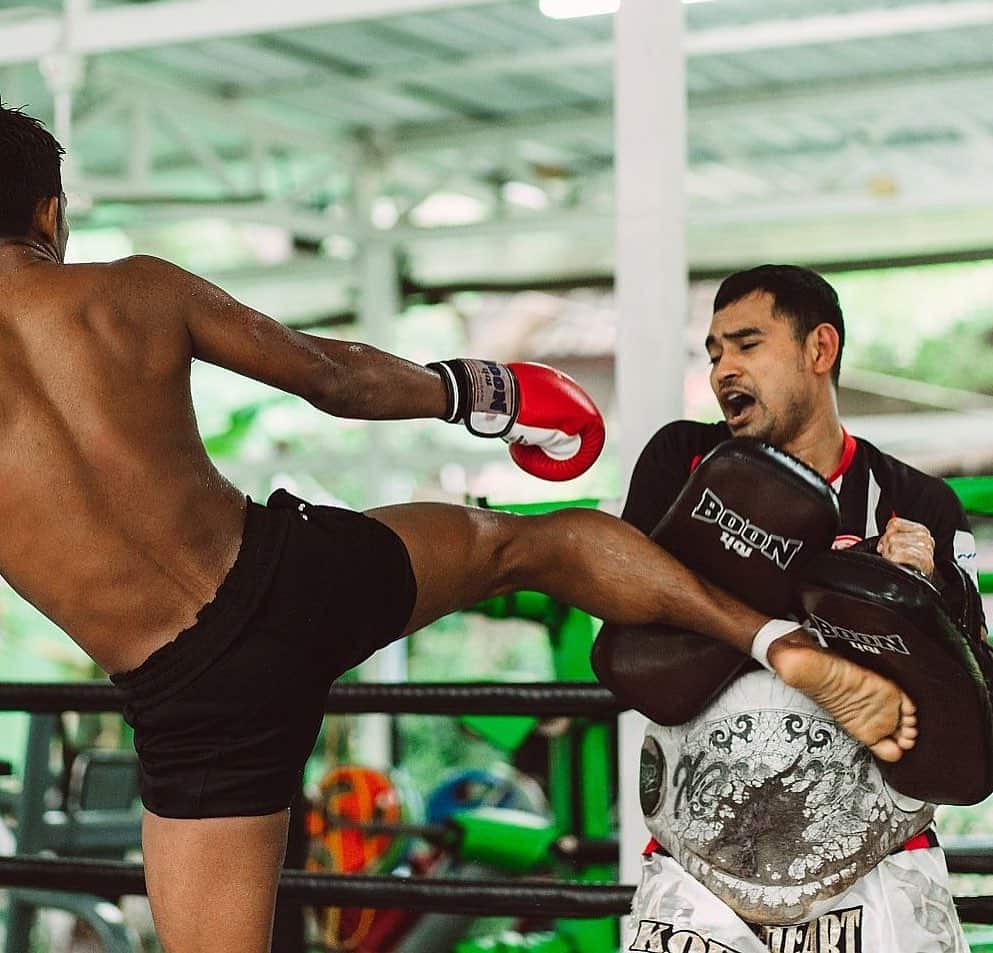
Knees and Elbows
For starting in Muay Thai training, one likely will not begin utilizing knees and elbows right away. Balance and a Muay Thai stance must be mastered first.
For knees in Muay Thai Training, there are three basic types you can learn: straight knees, diagonal knees, and horizontal knees. These moves can be used when you’re in close with your opponent, in a position called a clinch. Using your knee to strike your opponent can be very effective, but it takes practice to get the technique right.
When it comes to elbows, there are only four basic types that beginners should focus on: the horizontal or hook elbow, the uppercut elbow, the elbow chop, and the Muay Thai horizontal elbow. These moves involve striking your opponent with your elbow, and can be very powerful when done correctly. Like with the knee strikes, it’s important to practice these moves frequently in Muay Thai Training in order to get the technique down.
Muay Thai Training
For starting in Muay Thai training, know that it takes patience. One will not master ay of these techniques in one session. It takes time to master simply one move, and Muay Thai has a ton of them. But remember, it’s a great way to stay in shape and have fun.
In conclusion, Muay Thai training is a great way to get in shape, learn self-defense, and develop new skills. The benefits of this ancient Thai combat sport are numerous, including a whole-body intense aerobic and anaerobic workout, improved cardiovascular performance, and increased strength, power, balance, and coordination.
To get started, all you need is a pair of gloves, hand wraps, and athletic shorts, and once you find the right gym, you can learn everything from the basic stance and forms of striking to more complex techniques. With dedication and effort, Muay Thai training can help you discover a new passion for martial arts while improving your overall body health.

